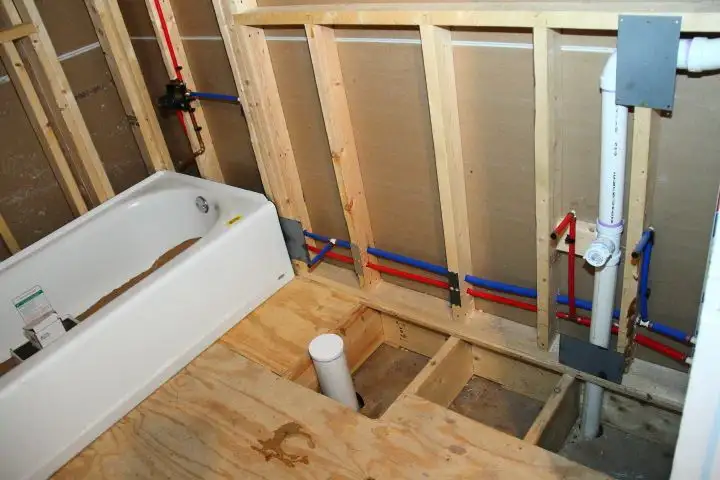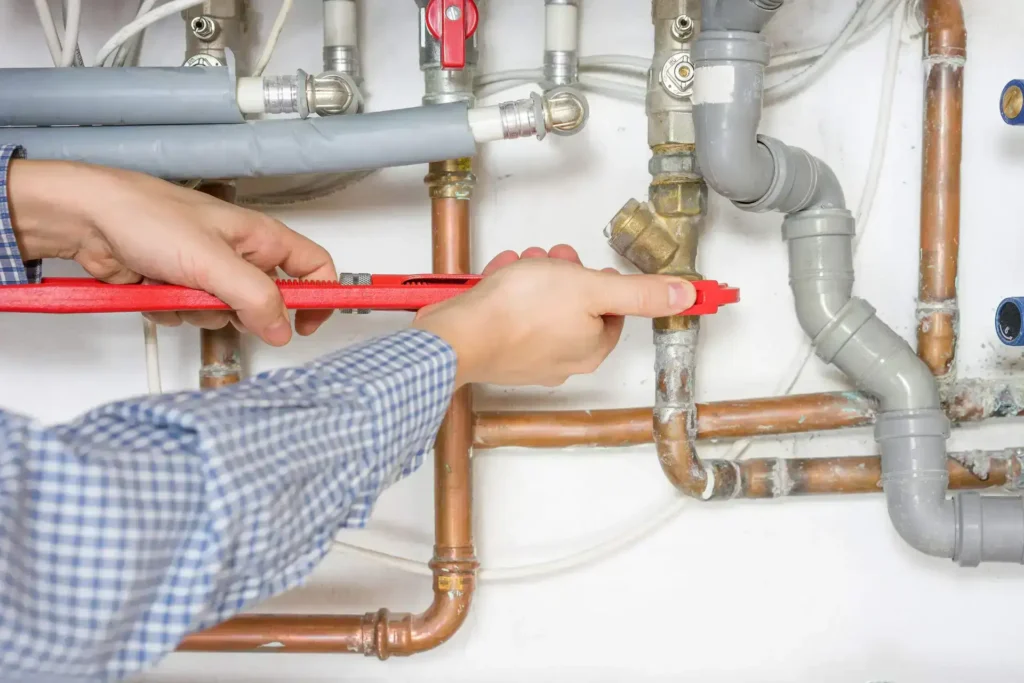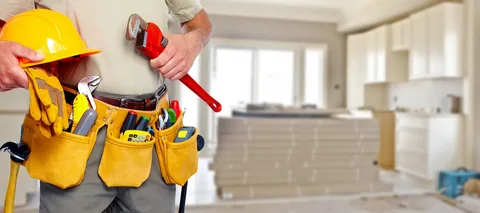Here are some rough-in plumbing for new bathrooms. It means the price for installing pipes and drainages before fixtures go into the dwelling. Cover base plumbing work. Mainly for the construction or renovation of bathrooms. Want to find out how much to get started to be on the way to that dream bathroom? It’s the plumbing that forms the space. Let’s see what makes it tick on cost. Thus, it also varies with the size of the bathroom and the materials used. Labor rates also contribute to the price. It can range between $3,500 and $20,500.
What Is Rough-In Plumbing?

Before discussing the cost of rough-in plumbing, one must know what it entails. Rough-in plumbing is actually the first step to the installment of a home’s plumbing system. This is primarily composed of water supply lines, drainage pipes, and vent pipes.
This happens before the walls, floors, and ceilings are put in place. This timing makes it easier for plumbers to install pipes because once the construction is done, the pipes are hidden inside the structure.
This step is important since it is the foundation on which the plumbing system in the house is built. The inspectors check the work for local code compliance. Then, walls and ceilings are finished, and fixtures, such as sinks and toilets, are installed.
Cost to rough-in plumbing for a bathroom
Surprisingly, rough plumbing for basement bathrooms can vary incredibly based on layout, complexity, and the need to break through a concrete slab. On average, however, it ranges from about $1,000-$10,000 during rough plumbing.
Several factors determine the cost such as:
Rough Plumbing:
A basement bathroom is likely to be rough plumbed for an initial investment of between $1,000 and $10,000, influenced by many factors like the size and layout of the bathroom and distance from existing plumbing. An extra labor cost at the installation time will also be incurred as a result of breaking through a concrete slab if the floor of your basement is made of a concrete slab. The complexity of the plumbing system and any existing rough-in plumbing can also affect the final cost.
Electrical Work:
On average, it will cost you between $500-$2,500 for electrical work for a basement bathroom; it is going to depend, really, on how much electrical wiring there will be, plus how many fixtures there are going to be. This could include things like lights, outlets, and further electrical components as well. However, specialized attachments such as exhaust fans and heated floors will add extra costs to this.
Drywall and Framing:
Building the walls and framing for your bathroom typically costs between $1,000 and $3,000 for basic framing, drywall, and possible features such as shower niches.
Tile Floor:
Something that makes many people feel special about their bathrooms is their tile flooring. It lasts, and it looks good. Tile floor costs for different materials you can choose run from about $900 to $3,000.
Permits:
You have had a letdown about that. For instance, $50 to $2,000 can bring very different figures, amounts that may help you get special permits from your local building department. Mostly, this will depend on where you are and the size of your project.
Lighting Fixtures:
Bathroom lighting, therefore, the functionality and ambiance of the space can be affected. Also, light fixtures can cost anywhere between $150 and $900, depending on what style you go for, how many of them you need, and how good they are.
Faucets:
Faucets seem like a smaller item, but they add a lot to the overall decor and function of your bathroom. Cost can vary greatly for faucets. They can go from about $150 to $350, depending on style, finish, and brand.
Toilet:
This bathroom essential comes in various styles and functionalities. Toilets typically cost between $200 and $600, with higher-end models featuring bidet functions or smart technology commanding a premium price.
The Average Cost of The Feature
| Feature | Average Cost |
| Rough Plumbing | $1,000 to $10,000 |
| Electrical | $500 to $2,500 |
| Drywall and Framing | $1,000 to $3,000 |
| Tile Floor | $900 to $3,000 |
| Permit | $50 to $2,000 |
| Lighting Fixtures | $150 to $900 |
| Vanity | $500 to $4,000 |
| Faucets | $150 to $350 |
| Toilet | $200 to $600 |
| Towel Rack (Optional) | $20 to $100 |
| Bathtub (Optional) | $1,400 to $7,000 |
| Glass Shower Door (Optional) | $500 to $1,400 |
| Shower/Bath Liner (Optional) | $2,000 to $6,000 |
| Shower (Optional) | $2,000 to $8,500 |
Cost of Rough-In Plumbing for a Bathroom in the Basement
When roughing in plumbing in the basement for a bathroom, there are things to note that impact the final cost. Rough-in plumbing is plumbing done without connecting it to a fixture to install water supply pipes, waste drainage, and vent the framework of a modern plumbing system in the bathroom.
Here are some of the key factors that tend to affect cost:
1. Bathroom Size and Complexity:
The larger your bathroom and the more fixtures you want to install (sink toilets, showers), the more plumbing you will need. If you want more fixtures in the bathroom, you will have more drain lines, water supply lines, and vent stacks, which all add to the cost of rough-in plumbing.
2. Drain Pipe Location:
The proximity of existing drain pipes to the planned bathroom will impact the complexity and thus the cost and the necessary additional plumbing work should the existing drains be a great distance from the intended bathroom location and also to excavate or core drill a concrete floor in older homes to connect the new plumbing system to the existing drain pipes, adding to the further expenses.
3. Concrete Slab Penetration:
Basements with concrete floors entail punching through the concrete in order to install pipes; hence an additional cost is incurred. Concrete is tough, it requires specialized tools and the know-how to be able to cut through them, thus increasing labor costs4. This is a higher spend compared with basements that have crawl spaces or raised floors where plumbing will be easy without punching a concrete slab.
4: Estimated Cost:
This type of rough-in plumbing cost can vary greatly, typically from $1000 to more than $5000. The simpler the installation, the less the cost will be, and depending on the extensive complication of the installation-for example, having drain pipe connections extended or other factors like concrete slab floors-the more it will cost.
With this knowledge, you can estimate how much rough-in plumbing is going to cost to your basement bathroom renovation project.
How to Optimize Rough-In Plumbing Costs?
While many factors contribute to the costs of rough-in plumbing of a basement bathroom, there are several ways to optimize and hence reduce expenses. Here are some sure ways to save money on your plumbing costs.
- Planning for Efficiency: There may be a way to reduce the plumbing very significantly with well-thought-out layouts in the bathroom. By placing fixtures closely together, you shorten the distance between the water supply and drain lines. For example, place the toilet and sink along the same wall. Obviously, from this position, you won’t require as much piping.
- Stacking Fixtures: Suppose it is a design of a bathroom that serves a shower and a sink, the ideal situation may be stacking both. If you install the sink directly above the shower, you will have both the drain and the water supply line running in the same direction so that you reduce the number of pipes. This design certainly compromises the most on plumbing at the least expense.
- Considering Future Needs: If there is a plan to expand the bathroom later, say adding a shower or a bath, it might be worth the cost of putting in the plumbing lines for rough-in at this time. You will save costs in the future by preventing excavation and running additional pipes later for added features by preparing now for things that may be needed. Ensuring that you do not pay for extra work down the road is good planning.
Cost of Rough-In Plumbing for a Bathroom in the Basement
When determining the cost rough-in plumbing cost of a basement bathroom, labor rates play an important role. Licensed plumbers are imperative to be hired for quality work and code compliance. Here is what can be expected.
- Hourly Rates: Expect to pay between $90 and $150 for one hour of rough-in plumbing with a licensed plumber, depending on geographic area, plus more in urban settings, which all relate to the cost of living.
- Experience Matters: Naturally, a more experienced plumber is likely to be more expensive, but he will often do the work faster, with less waste, and this is a long-term saving for your pocket.
- Travel Fees: Traveling fees are included in the final cost and may also range from about $50 to about $300, depending on the distance that needs to be covered to reach your place.
These costs associated with labor could really pile up, but probably with a professional plumber, the proposition could be given: everything is done right for the functioning yet safe plumbing system.
Conclusion
The charges of rough-in plumbing for a new bathroom range based on many factors. Overall, it ranges from about $3,500 to $20,500. The final amount depends on the size and location of the bathroom. Moreover, hiring a professional plumber assures proper installation action, but labor will cost more. Other costs include materials such as pipes and fittings. It is advisable to take quotes from different contractors for accurate estimates.
FAQS
Q1) Do I need a plumber for rough-in plumbing?
Yes, indeed, it must be done by a licensed plumber since the process calls for proper installation and everything by code.
Q2) What does it involve in the process of rough-in plumbing?
It includes laying down water supply pipes and drainage pipes. It also involves installing vents for proper flow.
Q3) How long does rough-in plumbing take?
It usually takes 1 to 3 days. The time depends on the bathroom’s complexity and the plumber’s schedule.
Q4) What happens after rough-in plumbing?
After rough-in plumbing, the walls and floor are finished. Fixtures like sinks, toilets, and showers are then installed.


